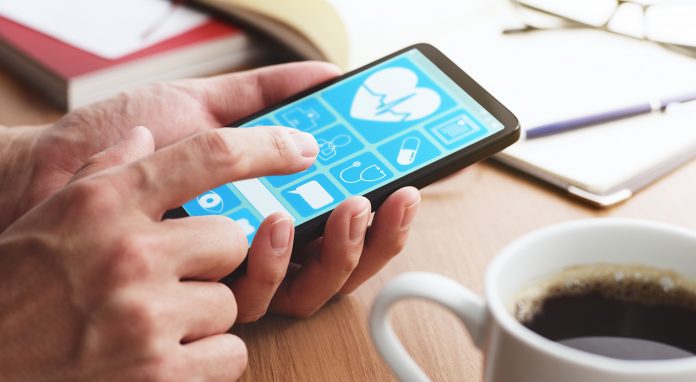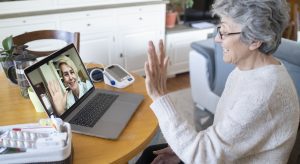
Dr Vishal Shah, GP and Chief Medical Officer at digital health company, Thriva draws on the lessons learned during the COVID-19 pandemic and opportunities to scale up at-home and remote digital care.
Former Prime Minister Tony Blair recently published a report calling for NHS reform to make our healthcare system fit for the future on the very same day as the then Health Secretary, Sajid Javid, delivered a speech setting out the government’s plan for digital health, an agenda which his successor Steve Barclay must now seize upon.
Tony Blair is right when he said that sustainable and modern healthcare systems will ‘have to go beyond symptoms and focus on the causes as well… True healthcare is not episodic but continuous and can only be done with the individual, not to an individual.’ The NHS is outstanding at caring for us when we are already ill, but that is sick care, not healthcare. Empowering patients to be in control of their health and focusing on preventive healthcare to help people avoid getting sick in the first place, will result in a healthier, happier, and more fulfilled population and – crucially – reduce pressure on NHS services and clinicians.
Putting to one side any partisan political differences, the focus for politicians, policymakers, and the healthcare sector alike now has to be on the solutions required to deliver this change. By 2024, health will account for almost half (44%) of all day-to-day spending on public services, yet we can expect to spend on average a quarter of our life in ill health. The number of older people with four or more concurrent illnesses is also expected to double in the next decade or so.
Modernising healthcare with remote digital care
A vision of a modern and personalised healthcare system underpinned by remote digital care monitoring, virtual wards, and direct communication with practitioners through an app is certainly a step in the right direction. But as with all policy announcements, strategies, and speeches, the proof will be in whether this vision is turned into reality and whether the enormous potential benefits of remote digital care, in terms of improved health outcomes and reduced pressure on services, are delivered.
To achieve these ambitions and make our healthcare system fit for the present day and the future, we need to learn from lessons during the COVID-19 pandemic. The pandemic knocked down the barriers between the public sector, the private sector, and experts working in research, academia, and the third sector. We need the same level of cooperation and focus on utilising all the resources at our disposal to make the vision of a digital, preventive, and personalised healthcare system a reality.
During the pandemic, we built lab capacity, smart diagnostics infrastructure, and a remote testing system almost overnight. We can now make use of the same facilities and expertise to bring scalable, accessible testing to millions of people through collaboration between the public and private sectors.
The NHS working hand-in-glove with healthcare partners to scale up mass testing and remote digital care monitoring. For example, helping patients to self-monitor for diabetes or risk factors for cardiovascular disease at home will help to deliver on the government’s ambition for a more personalised healthcare system that better serves patients, frees up capacity and will also save taxpayers money.

© iStock/Vladimir Vladimirov
Harnessing the potential of technology
Politicians across the spectrum echo each other when it comes to their statements on learning the lessons from the pandemic and harnessing the potential of technology such as digital remote care and data to improve the efficiency and effectiveness of our healthcare system.
What is important now is focusing on what this means in reality and the nuts and bolts of how this can be implemented. We have hugely increased health literacy across the population, with tens of millions of people now feeling comfortable with ordering a test online, taking tests at home, communicating about their health via an app, and changing their behaviours as a result of remote digital care and diagnostics.
We do not need to reinvent the wheel. Instead, the challenge is connecting a more health-literate population with the revolutionary potential of remote digital care diagnostics infrastructure and the power of technology and data. By focusing on scaling up and opening access to remote diagnostics and giving people the tools they need to improve their health, government and policymakers can set us on the road to a modern healthcare system fit for the future.
Our aim must shift from a health service that is there to treat people when they get sick, to one that is helping people live longer, healthier, and more fulfilled lives. The pandemic is the best possible demonstration of what is possible when all the resources of the public and private sector are combined in the pursuit of a shared aim – with 28 million people now carrying the NHS app around with them, and remote testing becoming a part of everyday life. We have a unique opportunity to use this experience to build a healthcare system that is fit for the future challenges we face.
Dr Vishal Shah MBBS MA (Cantab) MRCGP
Chief Medical Officer
Thriva
https://thriva.co/
This article is from issue 23 of Health Europa Quarterly. Click here to get your free subscription today.










